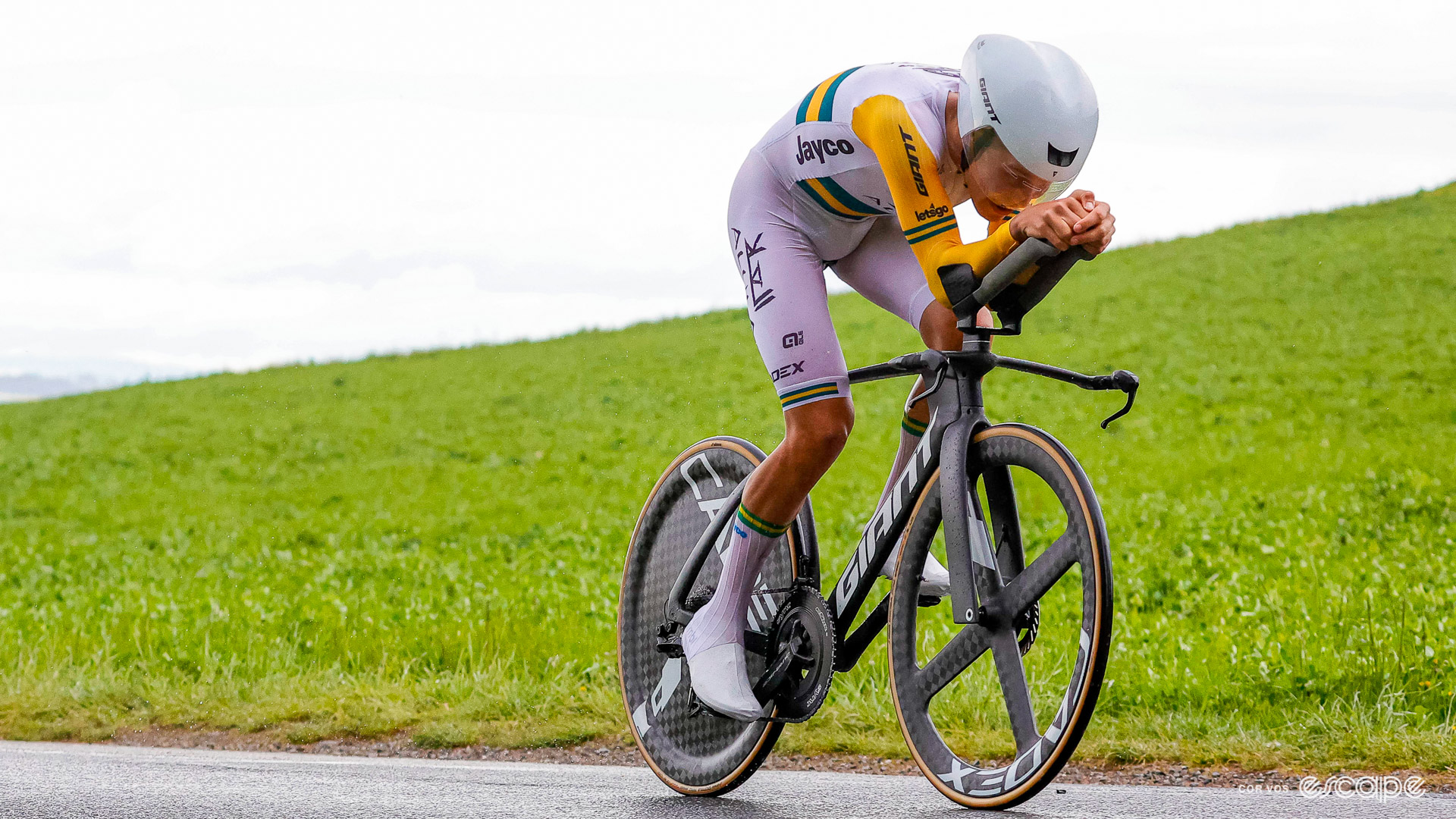Giant has a new Trinity TT bike, as seen under Luke Plapp in today’s time trial stage of the Tour de Romandie. The latest Trinity resembles the outgoing Trinity, unsurprising given Giant’s tendency to follow the “If it ain’t broke, don’t fix it” approach. But amongst a host of minor aero tweaks, there is one major difference: the Trinity now has disc brakes.
It’s not often, these days, that we get to write about a new bike making the switch from rim brakes to disc brakes. Almost every existing model has made the switch, and very few new models offer rim brakes or even both. But the Trinity was among the most high-profile rim-brake-stayers, especially since the Ineos Grenadiers switched from rim brake Dogmas to disc brake ahead of Paris-Roubaix in 2021.
In fact, the Trinity’s persistence with the rim brake probably wasn’t so much a death-defying last-stand but rather a function of timing. It was last updated at a time when new bikes could have gone either way, but TT bikes were mostly still rim brake. TT bike demand and sales don’t justify more frequent updates, and for the riders who were buying Trinitys, the platform’s rim brakes were still a plus as debate continued over the aero-properties of the disc brake concept. In fact, many might have been carrying across older rim brake groupsets and wheels as they upgraded frames.
Alas, though, the time has come. Regardless of whether the rim brake setup offers a better base aero platform, development in other areas ensures any new bike has to be disc brake, and so it is. Furthermore, there is more to being the fastest in a time trial than just being aerodynamic and the better braking disc brakes offer, particularly versus time trial rim brakes, can offer an overall faster setup when braking time and cornering are improved.
But the brake type isn’t the only change to the new Trinity. Giant hasn’t yet published any information or data on the new bike, but we can see some clear changes from the photos we have so far.
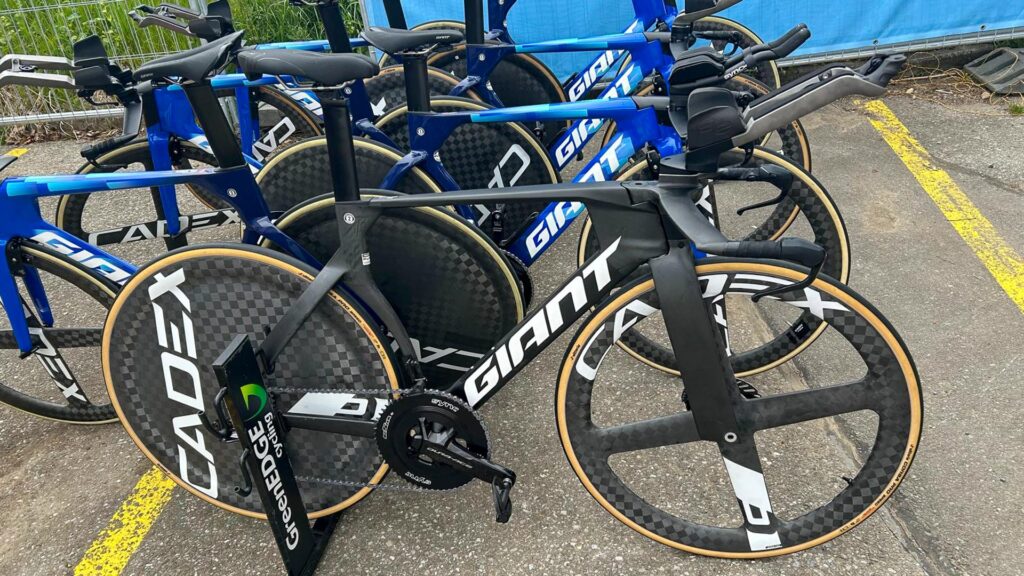
Front end
The front end offers the most notable updates and plenty to get our aero-nerdy teeth into. While Giant has retained the bayonet/external steerer tube design, the fork, base bar, stem, and risers are all entirely new.
The fork legs are now much deeper, presumably a change facilitated by not having to incorporate a rim brake caliper at the crown. The legs look roughly twice as deep. Those deep fork legs are also incredibly narrow and adopt the now common wide stance, getting them away from the rotating wheel and freeing up space for airflow between the fork and the wheel.
Also making way are the old two-piece base bar and stem, replaced with a new integrated bar/stem solution, which also houses a new mono-riser mount. The Trinity previously featured a traditional twin riser extension mounting solution, but the new bike joins many others in the category in moving to a single riser.

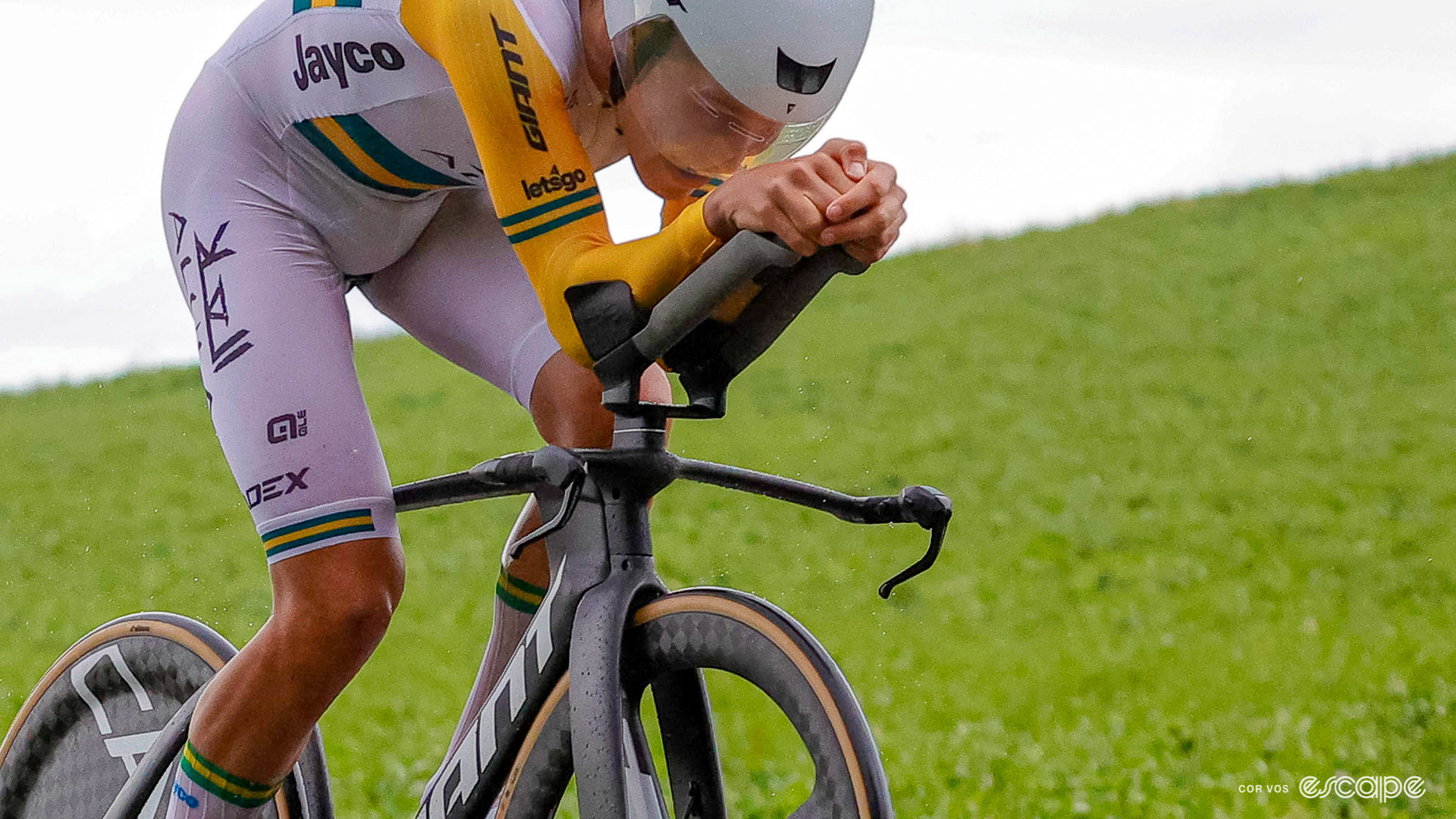
On paper, the mono-riser offers plenty of aero-promise: one riser is half as many as two, and half as many vertical structures should mean less frontal area and, in turn, less drag. However, mono-risers typically offer less adjustment than a traditional twin-riser setup and sometimes introduce other quirks, especially when those mono-risers follow the head tube angle, and as such, increasing stack height also shortens the reach – usually the opposite of what riders want when increasing stack. Furthermore, most mono-risers require an additional extension mount plate. This additional plate can increase stack, weight, and, to some extent, frontal area.
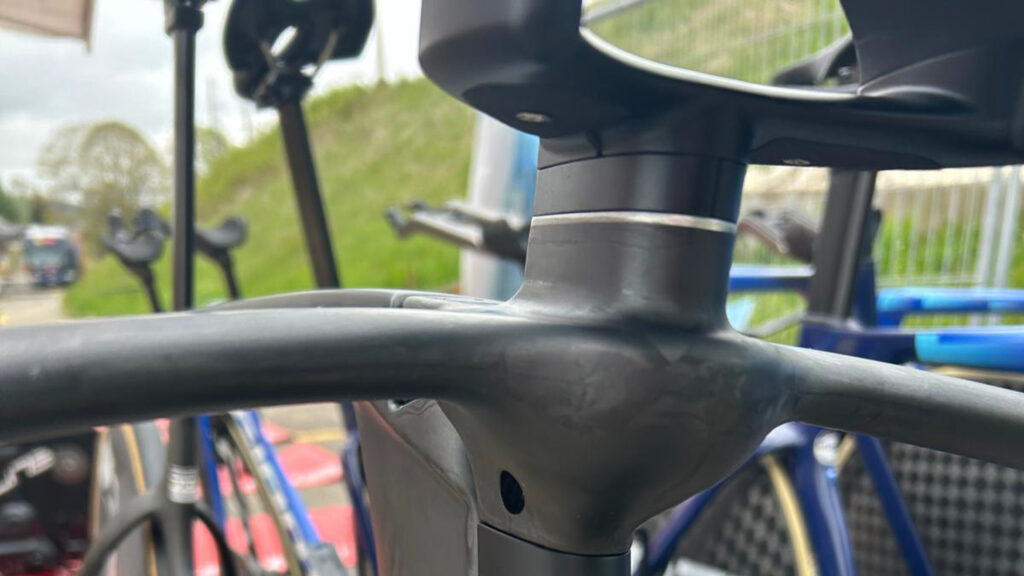
Long story short, mono-risers are not always the slam dunk they appear to be. That said, the new Trinity mono-riser solution is among the most refined we have seen. Plapp races with Ride Sync time trial extensions, so it’s challenging to know which parts of the setup are stock and which are specific to his setup.
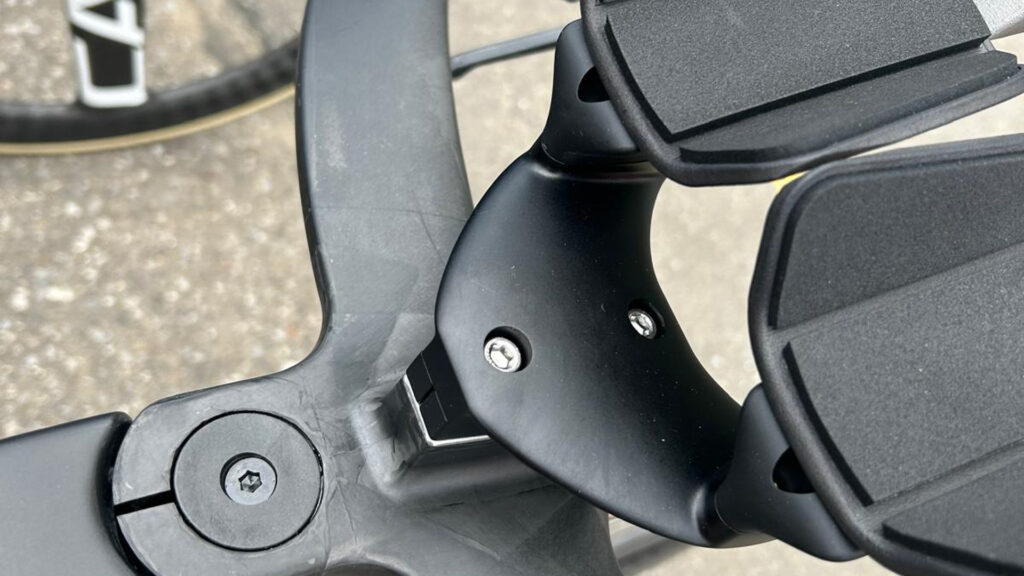
We can see that the new riser adopts a vertical or potentially a little forward sweeping position, meaning increasing stack won’t affect reach. A simple two-bolt mount on top opens the system for adding or removing spacers to adjust stack height. Furthermore, Plapp’s extension mount sweeps forward, which may be a custom-made plate for the Australian National Champion or could indicate Giant will offer various reach-adjusting extension mount plates. Overall, the plate appears to have an incredibly low profile, but, unfortunately, the lack of width adjustment makes me think this might be a custom piece made specifically for Plapp.
Moving onto the actual frame, Giant has taken the already deep head tube from the existing Trinity and made it even deeper. The new deeper profile also features plenty of interesting profiling extending from where the headset bearings would sit inside the frame at the top and bottom of the head tube. This profiling suggests Giant has narrowed the frontal profile of the headtube between the bearing seats.
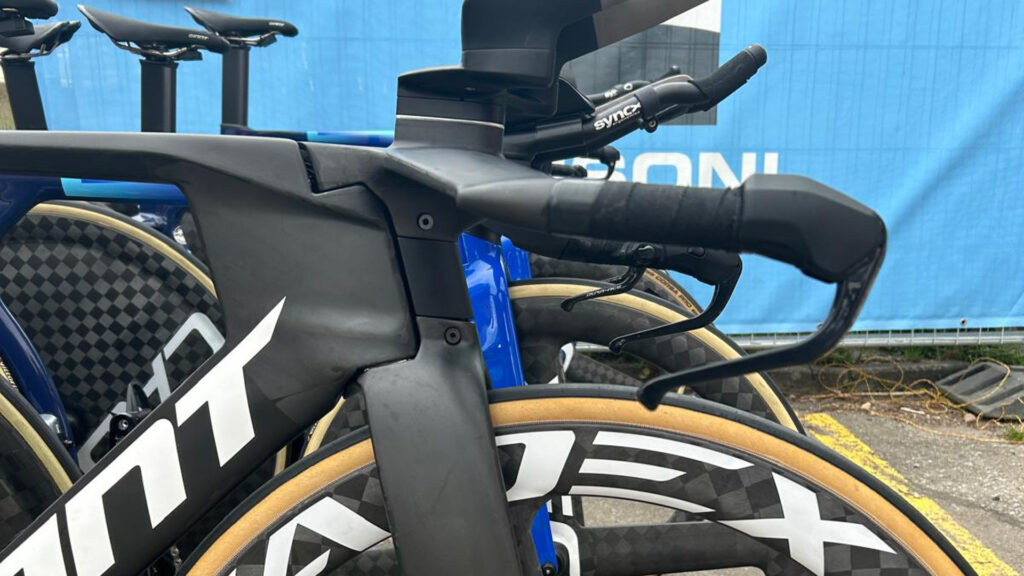
That profiling extending from the top bearing seat runs cleanly into a new top tube, which could indicate Giant is targetting some aero trickery, stiffness interventions, or, perhaps, this is just one spot the industrial designer got their way.
Rear end
Either way, that new top tube adopts a much flatter and narrower profile than the more rounded top tube of the existing bike. The tube tapers towards the intersection with the seat tube, where Giant has shrunk the so-called compensation triangle, bridging the underside of the top tube to the inside of the seat tube.
These compensation triangles provide some aero gain, but larger surface areas come at the cost of extra weight. In fact, the same is true of the new and narrower seat post and curved seat tube. If I were to guess, Giant has forgone some potential aero gains in this area in favour of the possible weight saving of the smaller tubes and less surface area offered. Expect Giant to explain that they made this call after assessing the aero-penalty is minimal, given how choppy and messy the flow is through this area.
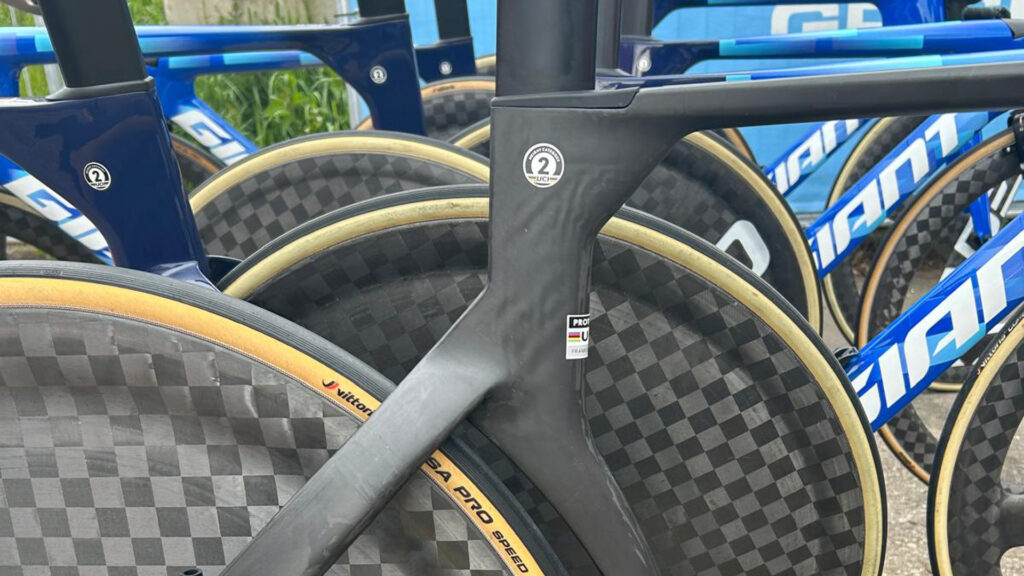
One thing that has grown is the seat stays, and the seat stay-to-seat tube interface is now entirely reprofiled. As with the front fork legs, the seat stays are much deeper and arc away from the rear wheel, again opening up the space between the frame and the rotating wheel. Interestingly, Giant has completely reprofiled the intersection between seat stay and seat tube.
Previously, the seat stays attached almost horizontally to the side of the seat tube. The new stays now attach to the rear of the seat tube, leaving the entire side profile of the seat tube uninterrupted. While it appears the top of the stays retains some of that almost horizontal profile, Giant has added a tiny vertical bridge from the stays attaching directly behind the seat tube. Overall, this new seat stay-to-seat tube interface location should claw back some depth lost during the shift to a shallower seat tube.
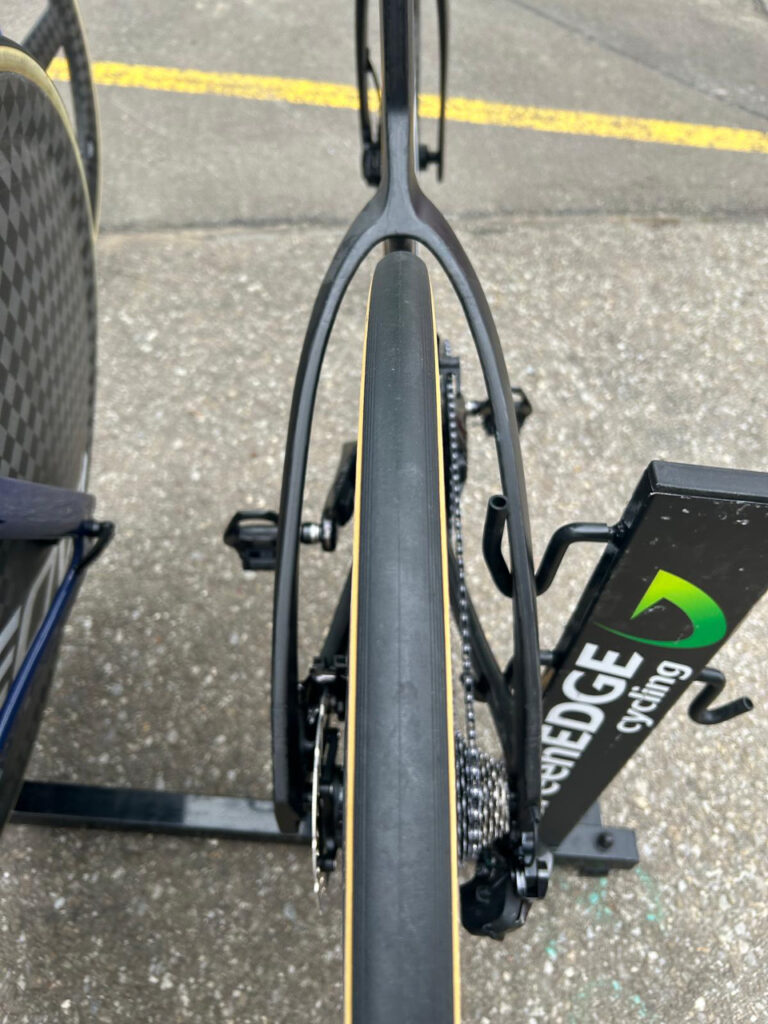
Like so many new bikes these days, the new Trinity seems to be taking an aero up front, light out back approach. However, it retains its Trinity identity, which will come as a relief to many, given how good-looking the existing bike was and how wild aero components have become. But is it actually faster than the old bike? It’s probably impossible to tell.
The outgoing Trinity was hugely popular and fast by most reports, but it was getting long in the tooth. Once upon a time, adding disc brakes would have made for a draggier bike, but with all the developments in other areas, that equation is more complex these days.
New helmet
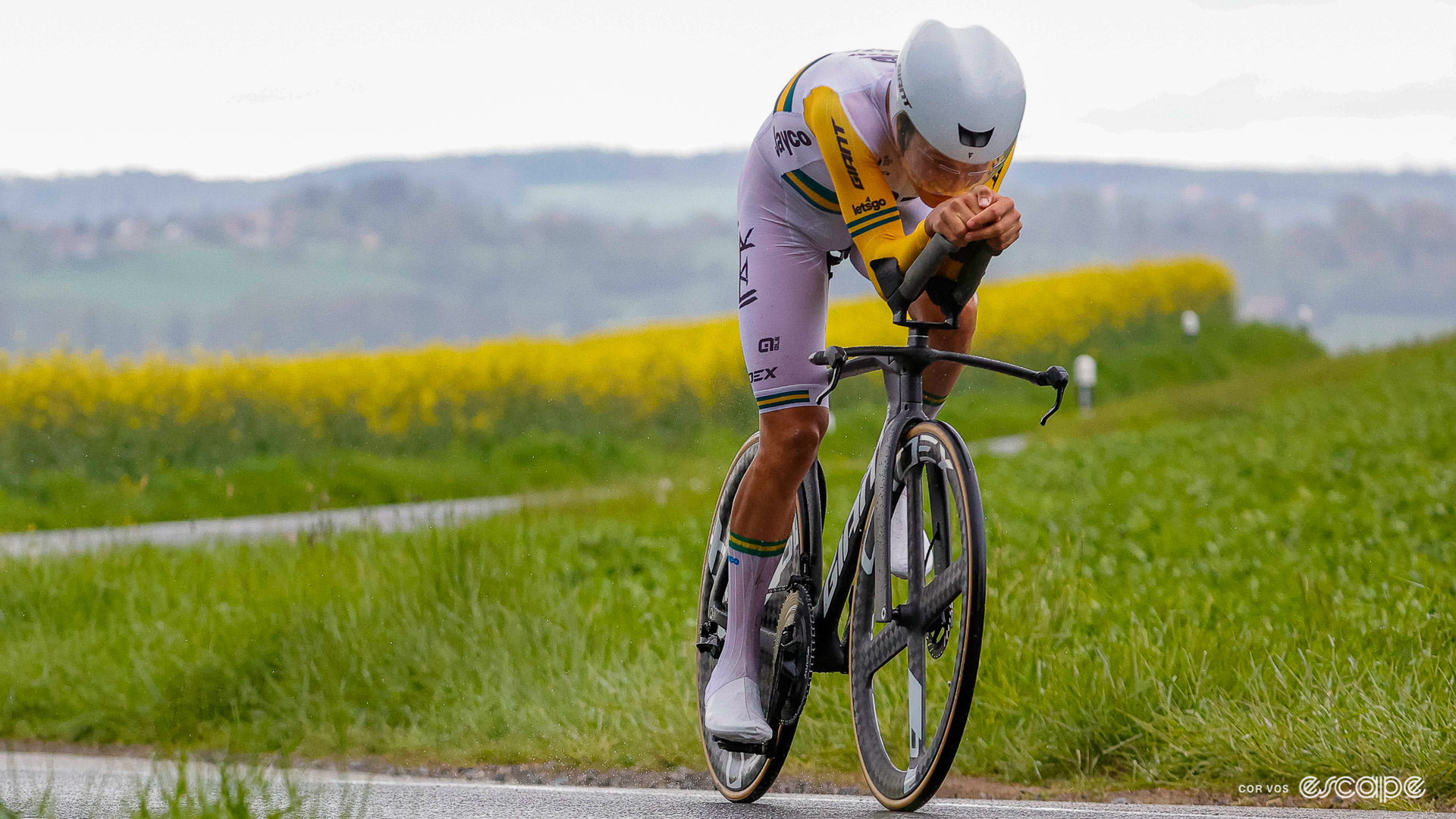
Giant also allowed Plapp to unveil a new TT helmet. The helmet features a rather deep visor (as seems to be the norm), twin front vents that almost appear as a single vent, a deep scalloped channel along the top, and a mid-length tail.
On the face of it, the new helmet appears relatively simple in comparison to the new Giro Aerohead II, but we shouldn’t judge this book by its cover.
Zooming in on some photos unveils some form of splitter plate or diffuser inside the rear of the helmet, bridging the two sides of the shell and splitting the open tail into a top and bottom section.
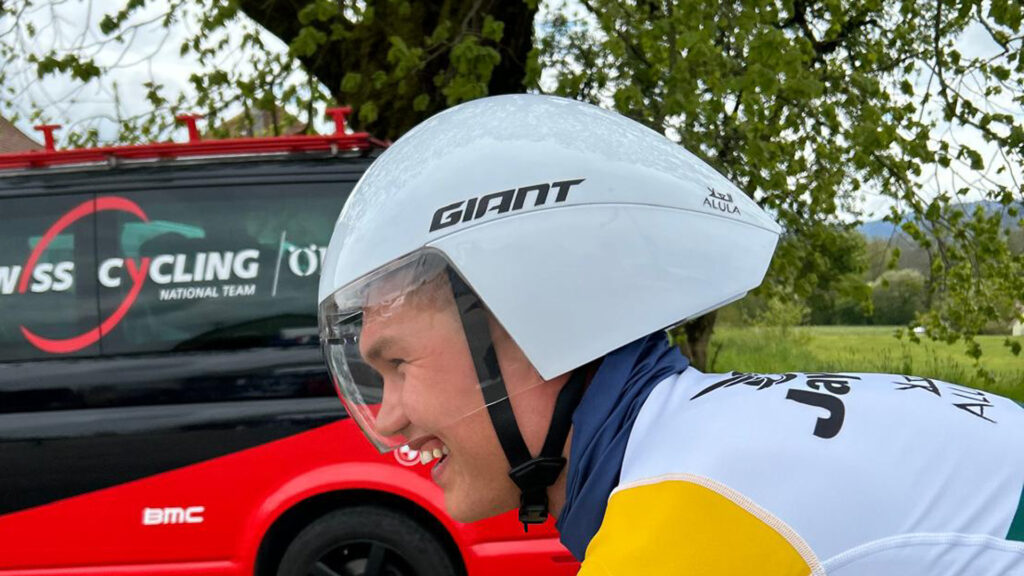
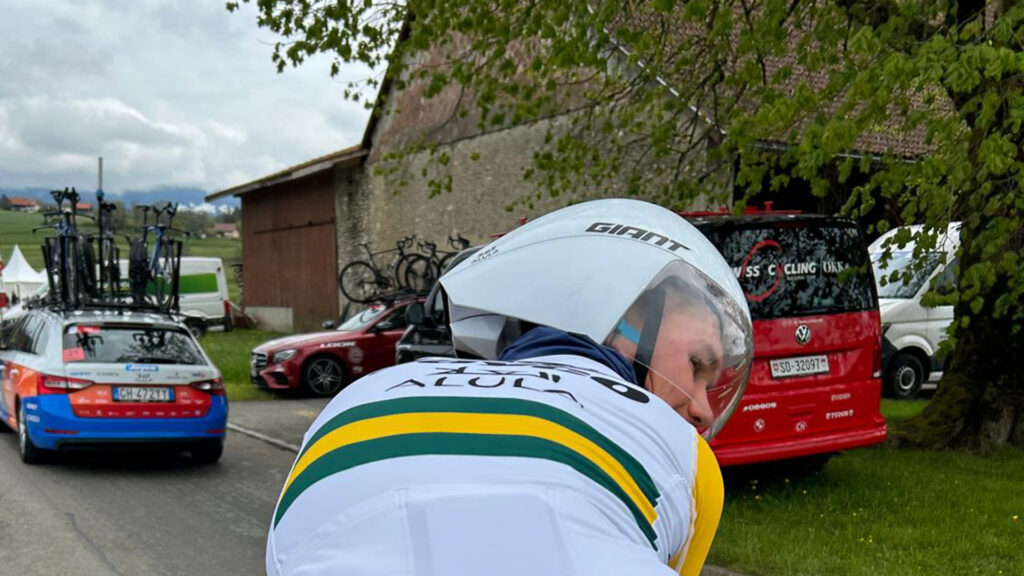
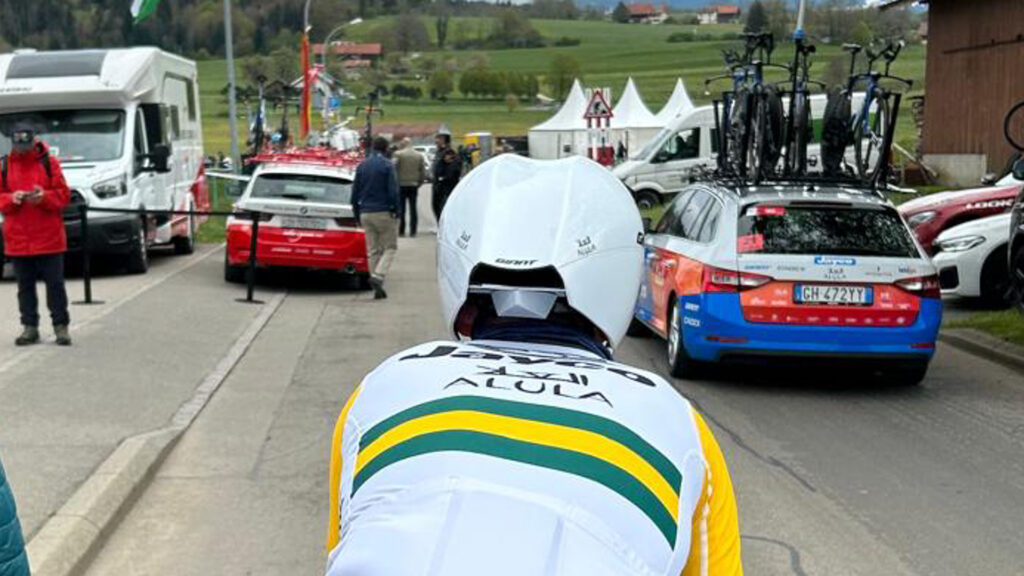
The underside of that plate features a fin-like structure that presumably sits atop the rider’s back when in the TT position, potentially guiding flow, sealing a gap between back and helmet, or simply doubling up as an indicator for the rider if the helmet is in the correct position.
The top side of that plate is left open, but the vent created between it and the shell is narrowed by that large scalloped channel running the length of the exterior. Following that channel to the front, it seems to line up directly with that single, two-port vent at the front of the helmet. Given that we know Plapp’s head doesn’t feature a similar depressed central channel, we have to assume the helmet’s raised shoulders on either side of that central channel are not a function of the helmet’s fit and that channel connects the front vents with that rear upper outlet.
What we really need is a look inside the helmet for a better understanding of how these various components connect, if that is what they do. That said, it seems certain Giant has understood the high-pressure zone at the front of the helmet can be alleviated with vents, and the resulting flow through the helmet may present other opportunities.
What did you think of this story?
